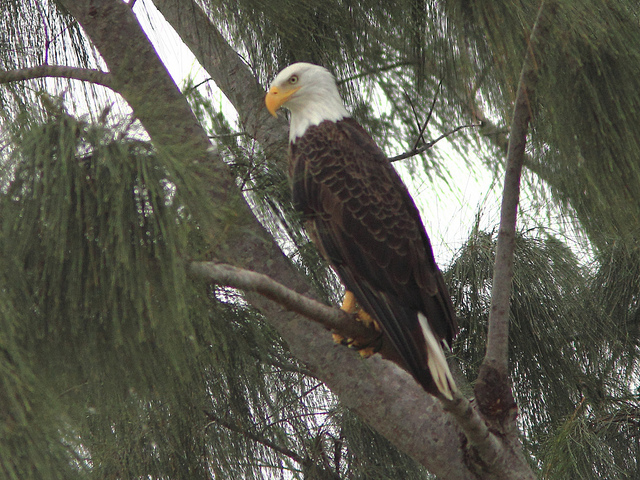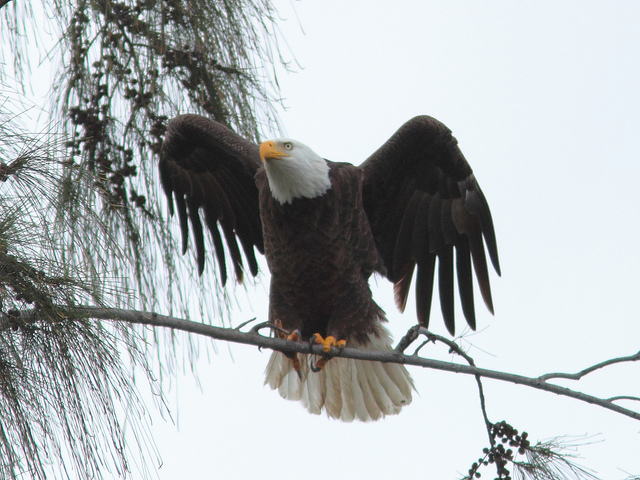Hi, Linda--
No, I am quite certain that this is the same male. It is said that if a male is lost that the female tends to abandon the nest territory in search of a mate. An unattached male will try to attract a female into his territory. Of course, anything is possible in nature.
The brown markings on the tail feathers of the male were noted for three nesting seasons. Last season they were not present. Somehow they persisted through at least two molts. They were noted in 2008-09, 2009-10 and 2010-11 breeding seasons. Your inquiry led me to review my old photos.
We thought it could be a sign that the bird was barely 5 years old when they first nested in 2007-2008, as they may breed when there are still some brown feathers on their head and tail. However, this is not borne out by my very first photos of the pair when they courted and copulated on the roof of a home across the lake from us in Miramar.
These poor shots do not seem to show any tail markings back in November, 2007:
The male is above the female:

This is the male:

I shot this one of the male a year later, in November, 2008. It is hard to tell about the tail markings:

I think this one is the male, also in November, 2008. It does seem to have dark tail markings:

Here is the male later in the same breeding season, in February, 2009, showing definite dark marks in his tail:

Here is the male in December, 2009, when we named him "Brown Spot":

In February, 2010, the brown right outer tail feather was clearly evident:

The next season, in November 2010 there was a hint of brown markings in the male's tail:

In January, 2011, some observers said they saw a brown spot and this was as close as I came to confirming its presence:

During last season (2011-12) the dark tail spots were never reported. This was taken in February, 2012:

Here is the male in March, 2012:
